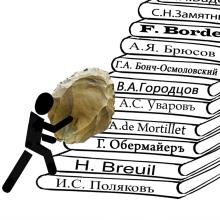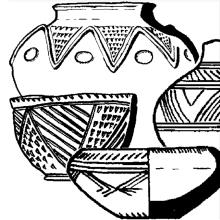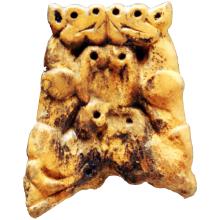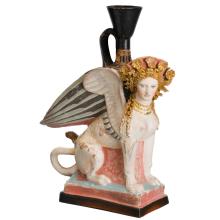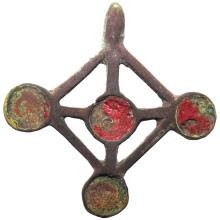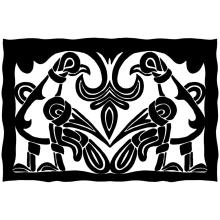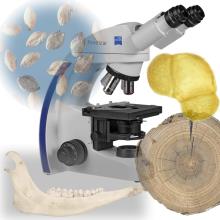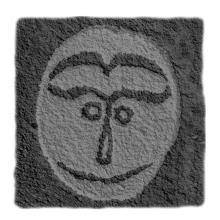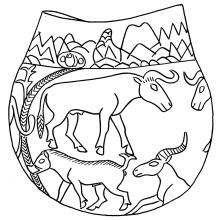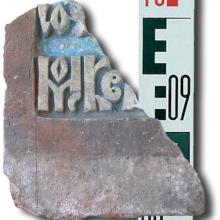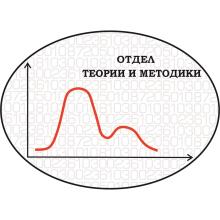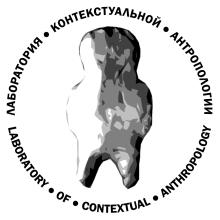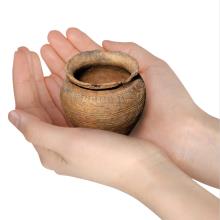The members of the Don expedition of IA RAS have found a unique plate with a depiction of winged Scythian gods in surrounding of griffons during their examinations of the barrow cemetery Devitsa V in Ostrogozhsky District of Voronezh Oblast. This is the first case of such a finding in the Scythian barrows on Middle Don, earlier there have never been found the items with the depictions of gods from the Scythian pantheon.

Silver plate with a depiction of Scythian Gods and eagle head griffons
“The finding has made an important contribution to our concepts of Scythian beliefs. Firstly, a particular number of gods are depicted at once on one item. Secondly, it has never happened before that an item with depicted gods has been found so far from the north-east of the main Scythian centers”, said the head of the Don expedition, doctor of historical sciences, Valeriy Gulyaev.
Barrow cemetery Devitsa V named after the neighboring village area was found in 2000 by the Don archaeological expedition of IA RAS. The site is situated on the hill of the right bank of the river Devitsa and is a group of 19 mounds which are situated in two parallel chains stretched from west to east. However, the significant part of ancient barrows has already disappeared: the necropolis area belongs to an agricultural sector and being actively ploughed.
Since 2010 the site has been systematically studied by the specialists from the Don expedition of IA RAS. During the cemetery excavations some great discoveries have already been made. Thus in 2019 in the barrow 9 the burial was found which held the remains of a woman-warrior and an old lady in a ceremonial female head wear – calathe.

Overall view of a burial
In a field season of 2021, the Don archaeological expedition continued examining the necropolis. Archaeologists started the excavation works in the barrow 7 in the central part of the cemetery Devitsa V in the vicinity of the barrow 9.
After many years of truck ploughing the barrow 7 which was likely one of the biggest ones in this necropolis and was of 1,3 meters height and 40 meters in diameter. The main grave referred to the Scythian times and dated back to the 4th century AD was located almost under the center of the mound and was a wooden tomb of 7,5x5 meters. In ancient times it was covered with oak half beams which were held by the seventeen large oak pillars on the gravesides. Nowadays this is the biggest grave among all found in Devitsa V necropolis.
In the south-east corner of the grave the fragments of three horse harness items: horse-bits, cheek-pieces, girth buckles, iron browbands, iron, bronze, and bone Scythian pendants. The archaeologists have also found six cheek-piece bronze plates in the shape of wolves with grin jaws two on each harness. Next to the horse harness was a cut jaw of a young bear which testifies according to the scientists the bear cult at the Scythes of Middle Don. Apart from it a molded goblet and a big, black-glazed jar have been found in different parts of the tomb.
In the north-east part of the grave separately from other items and some meters far from the skeleton a silver square plate nailed by many small silver nails to a wooden almost disappeared basis was laying. The length of the plate was 34,7 cm, the width in the middle part – 7,5 cm.
In the central part of the plate as the scientists suggested a winged figure facing of a Goddess of animal and human’s fertility, the Goddess known as Argimpasa, Cybele, the Great Goddess is depicted. The Upper part of her body is stripped, there is a head wear, likely crown with horns, on her head. The Goddess is surrounded from both sides with the figures of winged eagle headed griffons. The depictions of such type where the traditions of Asia Minor and ancient Greek are mixed, archaeologists found many times during the excavations of the Scythian barrows of Northern Sea region, Dnieper forest-steppe region and Northern Caucasus.

The plate in a cemetery in situ
The left side of the plate is formed by two square plates decorated with the depictions of syncretic creatures standing in a so-called heraldic pose (in front of each other, close to each other with their paws). From the right side two round buckles are attached to the plate on each of which one anthropomorphic character with a crown on his head standing surrounded by two griffons is depicted. Although, who are those characters and which item was decorated by this plate is still an open issue.
The barrow has already been plundered in ancient times. The plunders laid a wide test pit and “cleaned” all central part of the cemetery including the skeleton of the main buried. However, by the moment of plundering the roof of the vault had already fallen and that is why in the mixture of soil and tree remnants on the gravesides some grave goods have been preserved. Found items completely match the main elements of the Scythian “triad”. The items of the equipment, harness and “animal style” were found in a warrior’s grave.
There was a skeleton of a man of 40–49 years old in the grave. Next to his head archaeologists found many small gold semi-sphere plates which were embroidered into the grave clothes. Along the skeleton an iron knife and a horse rib (likely, the remains of the ceremonial food), a spearhead, and three dart’s heads were found. The scientists have been able to identify with high accuracy to reconstruct the length of the weapon relying on that the counterweights of the lower part of the pole arm have been remained untouched. So, the spear was about 3,2 meter long, the darts’ length was about 2,2 meters.
“There is a great work to be done on studying and interpreting of such an unusual divine figure. However, the finding is important not only as a unique item enlarging our knowledge about the Scythian culture and its existence in the Middle Don region, but it also shows how important is a persistent and systematic search, an accurate and neat working plan, a reliable method of excavations, and scrupulous routine labor of a great number of people of different professions in the work of an archaeologist. All this leads quite often to significant discoveries which are able to make a significant contribution to a long-established view on the past”, noticed Valeriy Gulyaev.


